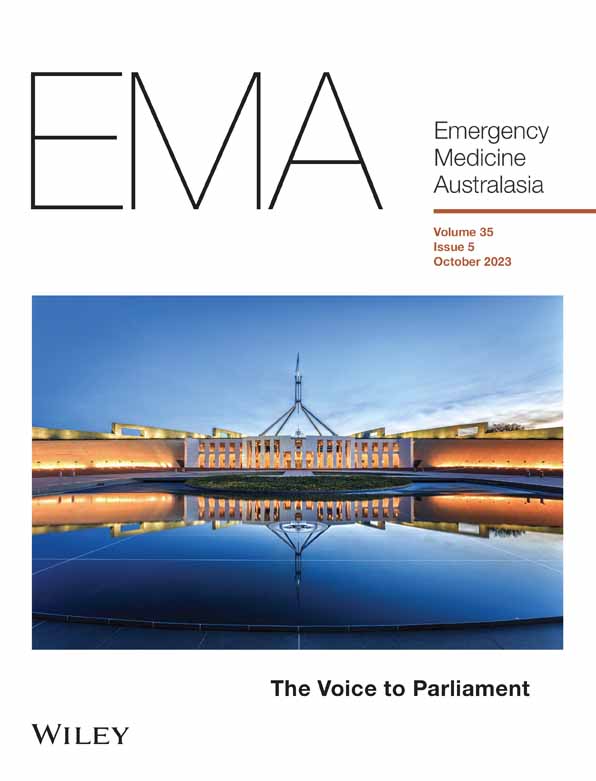Use of ketamine wafer for pain management by volunteer emergency medical technicians in rural Western Australia
Abstract
Objective
To describe the use of sublingual ketamine wafers administered by volunteer emergency medical technicians (EMTs) for pain management to patients in rural Western Australia (WA).
Methods
This retrospective cohort study included patients older than 12 years who were attended by volunteer EMTs in Esperance, Lancelin and Kalbarri, WA and received analgesic medications from 2018 to 2021. Patients who received ketamine wafers with/without other analgesics were compared to (i) patients who received only oral paracetamol and (ii) patients who received inhalational methoxyflurane without ketamine wafers with/without paracetamol.
Results
The present study included 826 patients, among whom 149 patients received ketamine wafer with/without other analgesics, 82 paracetamol only and 595 methoxyflurane with/without paracetamol. Patients who received ketamine wafers were younger (median age 49 years vs 54 years for the paracetamol group vs 58 years for the methoxyflurane group), required a longer median transport interval (56 min vs 20 min vs 8 min), trauma-related (73% vs 35% vs 54%), and presented higher median initial pain score (9 vs 3 vs 8 out of 10) than those who received paracetamol and those who received methoxyflurane, respectively. Eight in the ketamine wafers group (5.4%) had a record of nausea/vomiting after the administration of ketamine wafers.
Conclusions
Sublingual ketamine wafer was administered by volunteer EMTs without any evidence of major adverse events in rural WA and deemed useful as an additional pain management option when long transport to hospital was needed. No other symptoms that may be associated with the use of ketamine were recorded.
Open Research
Data availability statement
Research data are not shared.




